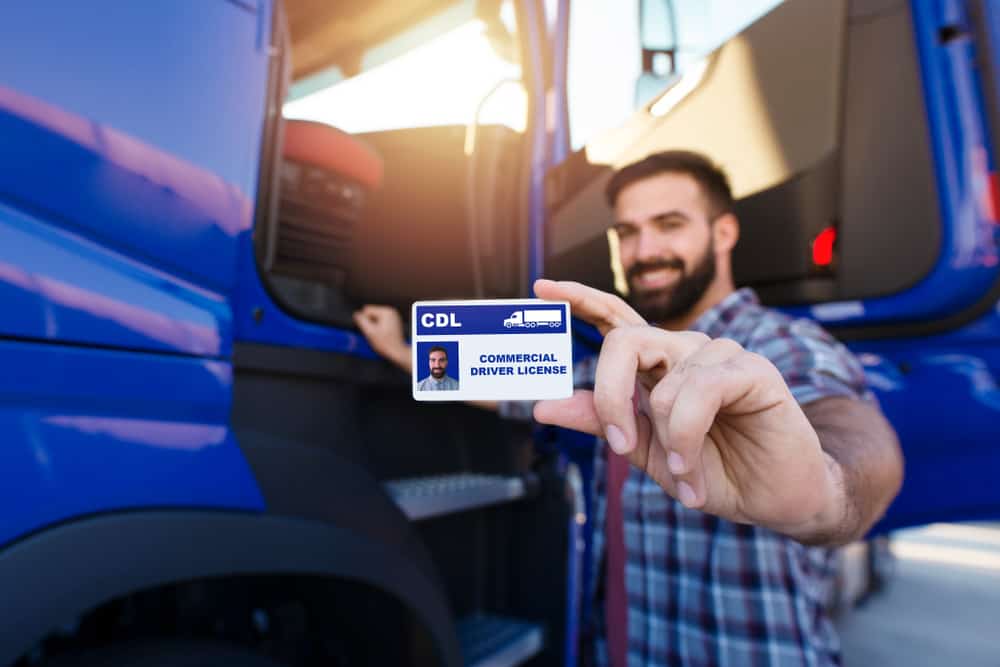The trucking industry is a vital part of America’s economy. Nearly every good consumed in the United States is loaded on, shipped, and arrives on a truck. The trucking industry offers a luxury that many other industries don’t have. Drivers are in high demand. There is a shortage of qualified CDL holders, and employers compete to hire experienced drivers.
If you’re searching for a field with a plethora of opportunities, trucking can offer it. Unlike many other careers, rather than spending money on college, you partake in specialized schooling. There are specific qualifications to become a qualified trucker. Keep reading to find out how to become a trucker step by step according to KTEN.
Step 1: Learn Your State Requirements

Shutterstock
Once you have become educated on what a trucker is, you will need to meet the requirements. There is a multitude of qualifications to become a trucker, including physical and legal. The majority of states require truckers to be at least 21 years old and eligible to work in the United States. However, each state has its own set of qualifications, so it’s essential to verify in the state you wish to pursue your career. For most companies, at minimum, truckers need to have a high school diploma or GED. Although it shouldn’t need to be said, truckers must also have a clean driving record.
Step 2: Attend Driving School

Shutterstock
You must meet the minimum required qualifications in your state before you can move onto the next step which is truck driving school. Although truckers do not require a college education, they are required to attend a truck driving school. When choosing a truck driving school, you’ll want to do your research. Drivers will mostly need a local school that has solid credentials. Some schools offer varying programs depending on your end goals, so be sure to select a school that meets your specific needs. Trucking school requires tuition upfront, but some may offer assistance. In general, trucking school includes a combination of both classroom and hands-on training. It will be what prepares you to sit for your commercial driver’s license (CDL) test.
Step 3: Get a Commercial Driver’s License (CDL)

Shutterstock
As you near the end of trucking school, you’ll take a state exam to obtain your CDL. All truck drivers must carry commercial driver’s licenses (CDL). The required state exam consists of a written test and a road test. To prepare yourself for the exam, you should visit your local Department of Motor Vehicles (DMV) to obtain a CDL manual. The written piece tests your knowledge of trucking laws, procedures, and safety measures. After, you will move onto the road test, which requires driving a commercial vehicle while a licensed examiner rides with you. Operating a commercial vehicle requires unique endorsements that can be clarified by your local DMV.
Step 4: Find a Job

Shutterstock
Once you have your CDL, you can begin your job search. Many companies are in high demand for truckers. Due to this high demand, many trucking schools assist in finding careers for their students. You can choose to look on your own or take advantage of this resource to get your foot in the door. You will want to research the company’s reputation and determine what their pay and benefits look like. Some schools provide national job placement, so if you have been itching to move, this would be a great opportunity.
Step 5: Learn More About the Company

Shutterstock
Finding a company is the first step, but what comes next? After seeing the right company fit for you and your goals, you’ll attend their training and orientation. Almost all companies require new employees to attend orientation, which covers information about the company, including their mission and values. Going to orientation is generally on-the-job training. You may begin by tagging along with experienced drivers to understand their process and what is expected of you. Due to the safety concerns and similar to most jobs, you may have to take a drug test and physical exam during onboarding.





